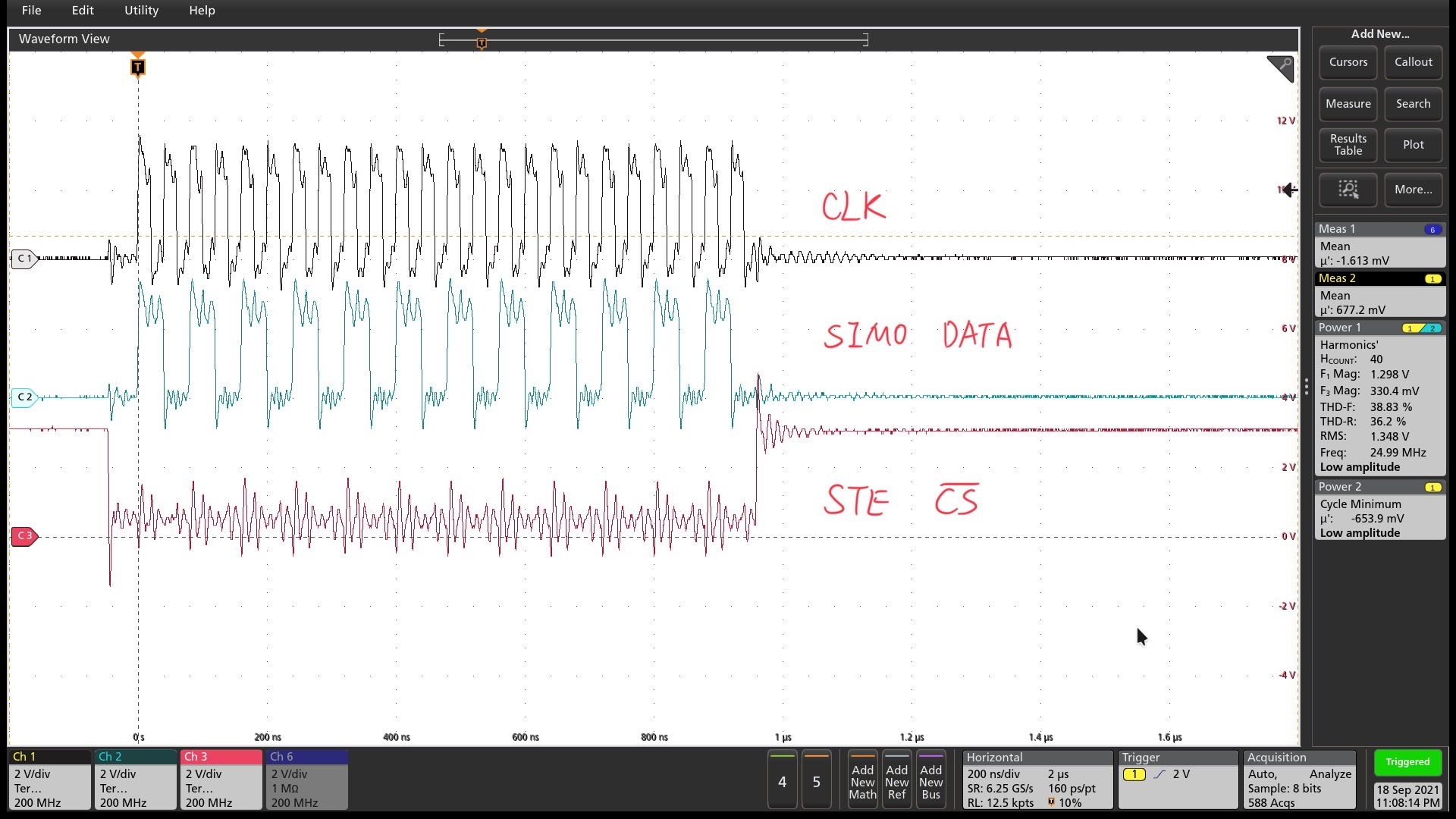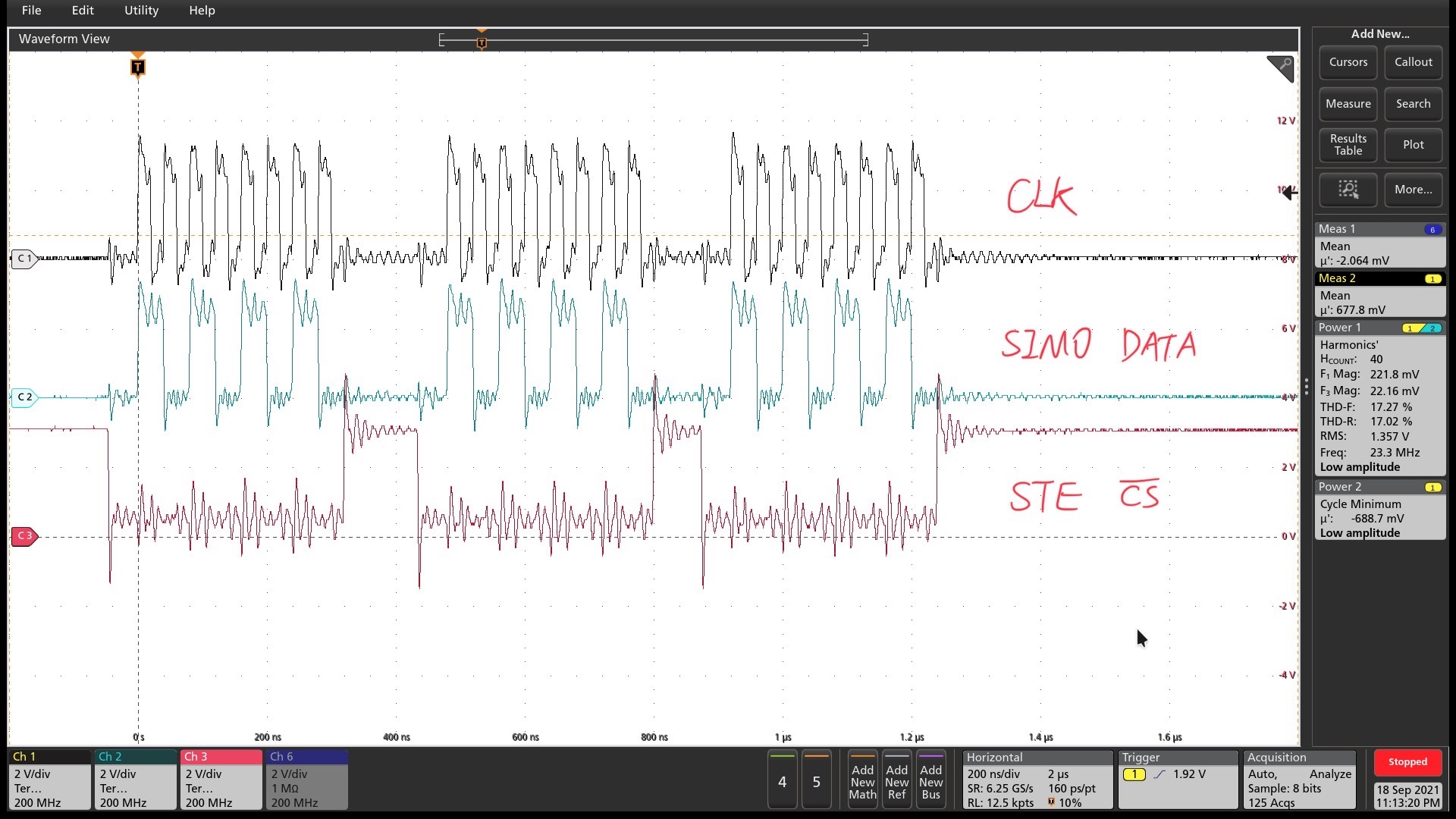Other Parts Discussed in Thread: LAUNCHXL-F28379D, DAC81408, , C2000WARE
Hello,
I am trying to use the SPI module of LAUNCHXL-F28379D to communicate with a DAC81408. Since DAC81408 requires input data with 24 bits, I configure the output of the SPI module as 8 bits and plan to continuously output three sets of data to control the DAC81408. The system works well when I download the code to the RAM of TMS320F28379D. However, the system fails if I download the code to the FLASH. I find the problem is that the SPI module can not output continuously when I download the code to FLASH.
The following is my SPI initialization code.
Then, for testing, the following code is executed in the main loop to output three sets of 8 bits SPI data.
Now, if I download the code to RAM, 24 bits 0xAAAAAA can be continuously outputted, as shown in the following figure.

Then, if I download the code to FLASH, the output is just three sets of 8 bits, as shown in the following figure.

Thus, may I ask what should I do if I want to continuously output n sets of 8 bits SPI data to form a set of 8n bits data when downloading code to FLASH?
Thank you very much!


